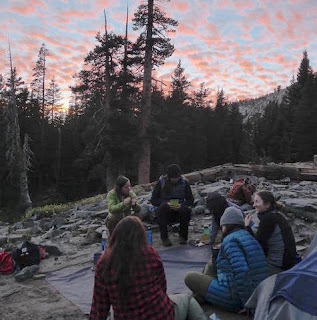As mentioned in the WV November newsletter, Wilderness Volunteers is a 501(c)3 charitable organization and donations may be tax deductible. Unfortunately, since the passage of the Tax Cuts and Jobs Act in 2017, many taxpayers no longer benefit from itemizing their deductions. An equally helpful alternative to making a charitable contribution may be a Qualified Charitable Distribution (QCD).
How QCDs work:
You must be 70 ½ or older in order to be eligible to make a QCD. You simply instruct your IRA trustee/custodian to make a distribution directly from your IRA (other than a SEP or SIMPLE IRA) to Wilderness Volunteers. The distribution must be one that would otherwise be taxable to you. You can exclude up to $100,000 of QCDs from your gross income each year. And, if you file a joint return, your spouse (if 70 ½ or older), can exclude an additional $100,000 of QCDs. Note: You do not get to deduct QCDs as a charitable contribution on your federal tax return – that would be double-dripping.
QCDs count towards satisfying your required minimum distributions (RMDs) that you would otherwise have to receive from your IRA – just as if you had received an actual distribution from the IRA. However, distributions that you receive from your IRA (including RMDs) and subsequently transfer to a charity cannot qualify as QCDs.
Important note: A QCD must be an otherwise taxable distribution from your IRA. If you have made nondeductible contributions, then normally each distribution carries with it a pro-rata amount of taxable and nontaxable dollars. However, a special rule applies to QCDs – the pro-rata rule is ignored, and your taxable dollars are treated as distributed first.
Why are QCDs important?
Without this special rule, taking a distribution from your IRA and donating the proceeds directly to Wilderness Volunteers would be a bit more cumbersome and possibly more expensive. You would request a distribution from the IRA and then make the contribution to Wilderness Volunteers yourself. You would include the distribution in your gross income and take a corresponding income-tax deduction for the charitable contribution. But, due to IRS limits, the additional tax from the distribution may be more than the charitable deduction. Furthermore, due to much higher standard deduction amounts ushered in by the Tax Cuts and Jobs Act passed in 2017, itemizing deductions may be become even less beneficial.
QCDs avoid all of this by providing an exclusion from income for the amount paid directly from your IRA custodian to Wilderness Volunteers – you do not report the IRA distribution in your gross income, and you do not take a deduction for the QCD.
You can make the QCD payable directly to Wilderness Volunteers, by asking your IRA custodian to make the check payable to the Wilderness Volunteers Endowment Fund and have the check mailed directly to:
Wilderness Volunteers
PO Box 22292
Flagstaff, AZ 86002
It is always a good idea to consult with your tax advisor if you have any questions regarding charitable contributions or QCDs.
Thank you,
Lee D. Cooper, CFP®, ChFC®
Treasurer, Wilderness Volunteers






















































